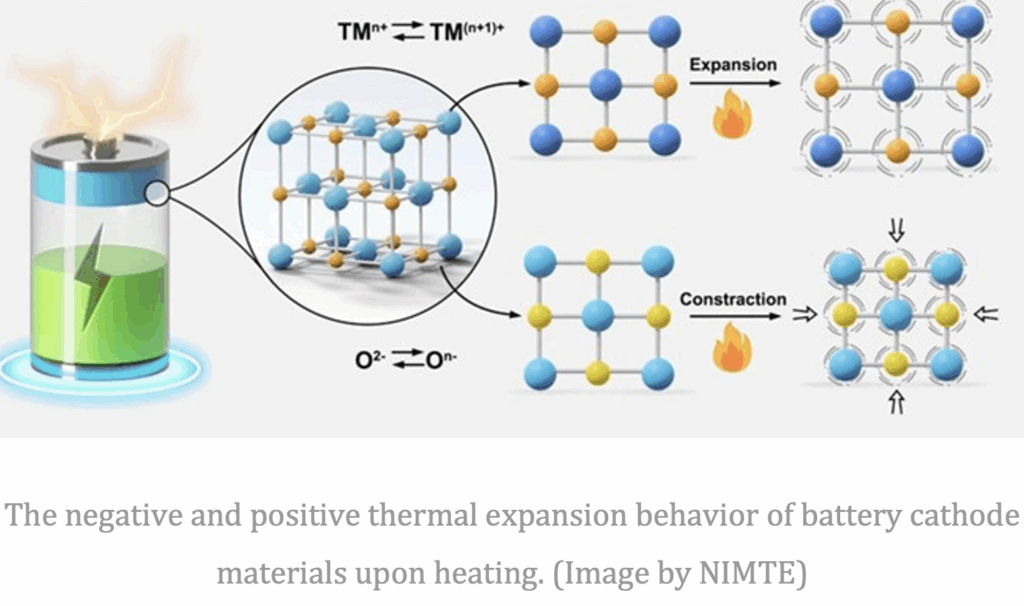https://www.nature.com/articles/s41586-025-08765-x
http://english.cas.cn/newsroom/research_news/tech/202504/t20250414_1041213.shtml
Lithium-rich layered oxide cathode materials in lithium batteries can deliver record capacities exceeding 300 mAh/g, thanks to revolutionary oxygen-redox (OR) chemistry. However, they are plagued by operational instability. The OR activity that enhances energy density by 30% also triggers asymmetric lattice distortion and voltage decay, which accelerates battery aging. Lattice distortion by thermal expansion is a common phenomenon in nature. It often leads to structural disorder or loss of precision, ultimately compromising material performance.
A team around Prof. LIU Zhaoping at the CAS Ningbo Institute of Materials Technology and Engineering (NIMTE) has developed zero thermal expansion (ZTE) materials. They discovered negative thermal expansion (NTE) behavior in lithium-rich layered oxide cathode materials, which contract when heated within the temperature range of 150–250°C. This unusual behavior, contrary to conventional thermodynamic expectations, can be attributed to thermally driven disorder-order transitions. Treating structural disorder as a tunable parameter rather than a defect, the researchers revealed a correlation between OR activity and NTE coefficients.
The team established a robust predictive framework, enabling the world’s first ZTE cathode through precise OR tuning. These ZTE materials effectively counteract thermal expansion, enhancing structural stability and durability. When subjected to 4.0 V voltage pulses, the lattice structure was reconstructed, achieving nearly 100% voltage recovery. This finding suggests that smart charging systems could restore materials from disordered states to ordered states in situ using electrochemical methods, potentially doubling battery lifespan.
This advancement opens new frontiers in ZTE material engineering.

